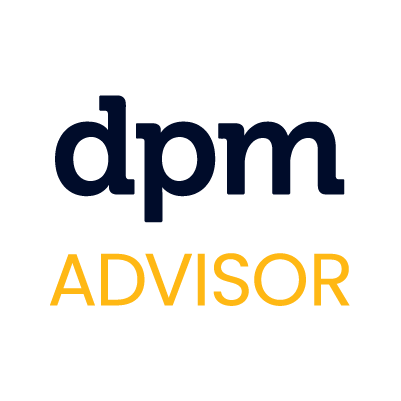What can resource management software can do for you? It will allow you to manage, track, and forecast resources across your projects (it's especially useful when you've got more than one going at a time!).
How exactly does it do this? There are a variety of common features of resource management software that provide capabilities.
What Are Common Features Of Resource Management Software?
Here are the common features offered by most resource management platforms to help you effectively manage your project progress and who is working on what.
1. Visibility
The ability to see exactly what’s going on with your resources is the whole point in having resource management software in the first place. The most important aspects for a project manager to have visibility into are:
- What’s the availability of each team member?
- What skills or purpose does each team member provide?
- What's the resource demand going to be in the future?
- What resources are in short supply?
Poor visibility leads to inevitable project delays and even project failure. Having clear views that display this information means stakeholders know what’s happening right now and what's expected in the pipeline.
2. Capacity Planning
Project managers should be able to get a clear picture of resource capacity planning: what tasks each person has, and what their priorities are. Is the workload overwhelming? Is a resource not being used to its full potential?
Knowing what’s going on inside a project from the resource’s task level allows project managers to plan efficiently and make sure people are working on the right things at the right time.
3. Financial
Keeping track of money is a vital part of project planning. This is true for both the overall estimated costs and the actual money spent. If a project goes way over budget, further funding might not be available and the project could fail.
Understanding how much resources cost allows you to better plan for the remainder of the project. With a resource planning tool, you can also figure out where too much money is spent.
For example, could scheduling the right resource, such as an automated task management tool, save money compared to hiring a person to complete tasks manually?
A straightforward way to manage people-based resources is for them to use time tracking software like Toggl. Get a clear picture on how much time they’re spending on a task and how much it will cost.
4. Collaboration
It’s imperative that project members communicate with each other to do their best work on a project. With resource management, it’s the same story. Let's say there's a resource scheduling problem and a service you needed is overbooked. Using resource scheduling software with collaborative tools means you can work together to solve the problem quicker.
5. Reporting
Reporting and having access to key analytics is vital for any project manager. You need to know what’s going on inside multiple projects and what the results are, both for making important changes and for showing your managers in project update meetings.
Reporting features help you keep track of how a project is progressing, where resources are being used most effectively, and gaps where processes could be improved. Without reporting, you could experience project delays and inefficient working.
Learn more about specific use cases for resource management software here.
Other Useful Considerations For Your Resourcing Needs
With every business’s needs being different, how do you know which features are useful? Ask yourself the following questions to figure out which resource manager platform would help rather than hinder your project management efforts.
How Accessible Is It?
Software that's been installed locally has its limitations, such as difficulty sharing data stored locally and the need to back up data regularly.
If it’s just your small team under one roof, that might not cause too much of a problem. But what about as your team grows, if you’re based all around the world, or working from home? You’ll all need to have access to the project info in real-time.
Cloud based platforms have an advantage here, as they’re often available on different devices and are more flexible as a result.
What Kind of Resources Do You Have?
If you’re just working with people, many resource management platforms are built just for this. Each team member has their own user accounts and can track time as they work on specific areas of a project.
If you need software that can handle services, equipment, and space resources, this is a bit trickier to deal with. You’ll need a platform that recognizes human and non-human resources equally to help you budget, track, and organize effectively on the same system.
How Easy Is It To Implement?
Put plainly, people won’t use a piece of software if it’s more of a hindrance than a help. It’s valuable to choose a software that allows people to log in easily on multiple devices. A Gantt chart, Kanban board, and graph view provide different ways to display timelines, tasks, and communications.
Does It Scale for the Future?
Opting for cheaper resource planning tools might work in your favor now, but if your business is growing, it’s less stressful and saves company money to choose a platform that fits you in the long-term.
Check to see how easy it is to add new users and whether the platform supports your overall long-term business goals, or if it’s a quick fix.
How To Get The Most Out Of Resource Management Software
Resource planning helps manage resources and hopefully leads to a more successful project. There’s no point in using software to manage your resources if you don’t know what they are or how they’re being used.
Creating a resource plan doesn’t have to be tricky or take a lot of precious time. Here’s an overview of how you can plan your resources before you choose your resource management software.
Make a List of All Resources
First, you’ll need to know every resource you plan on involving in your projects. That’s staff members, third-party contractors, spaces such as meeting rooms, equipment such as PCs, and services such as software subscriptions.
The Resource's Role
Next, you’ll need to make it clear what each of these resources offers. Consider the following for project team members:
- What are their skills
- Areas of expertise
- Qualifications
- Experience
If it’s non-human, think about:
- Where it’s located
- What function does it provide
From there, you’ll know how the resources you've listed relate to your project.
Timeline Plans
To fit these resources into your overall project plan, add them to a timeline:
- What parts of the process are they involved with?
- When are they needed?
- When will they be available again?
Booking
This ties steps one and three together. Once you understand what resources are available and when, you can begin booking them according to the overall project timeline.
From here, a resource management platform can even automate part of the booking to flag up when a resource isn’t available, or has been double-booked.
Need expert help selecting the right Project Resource Management Software?
If you’re struggling to choose the right software, let us help you. Just share your needs in the form below and you’ll get free access to our dedicated software advisors who match and connect you with the best vendors for your needs.



